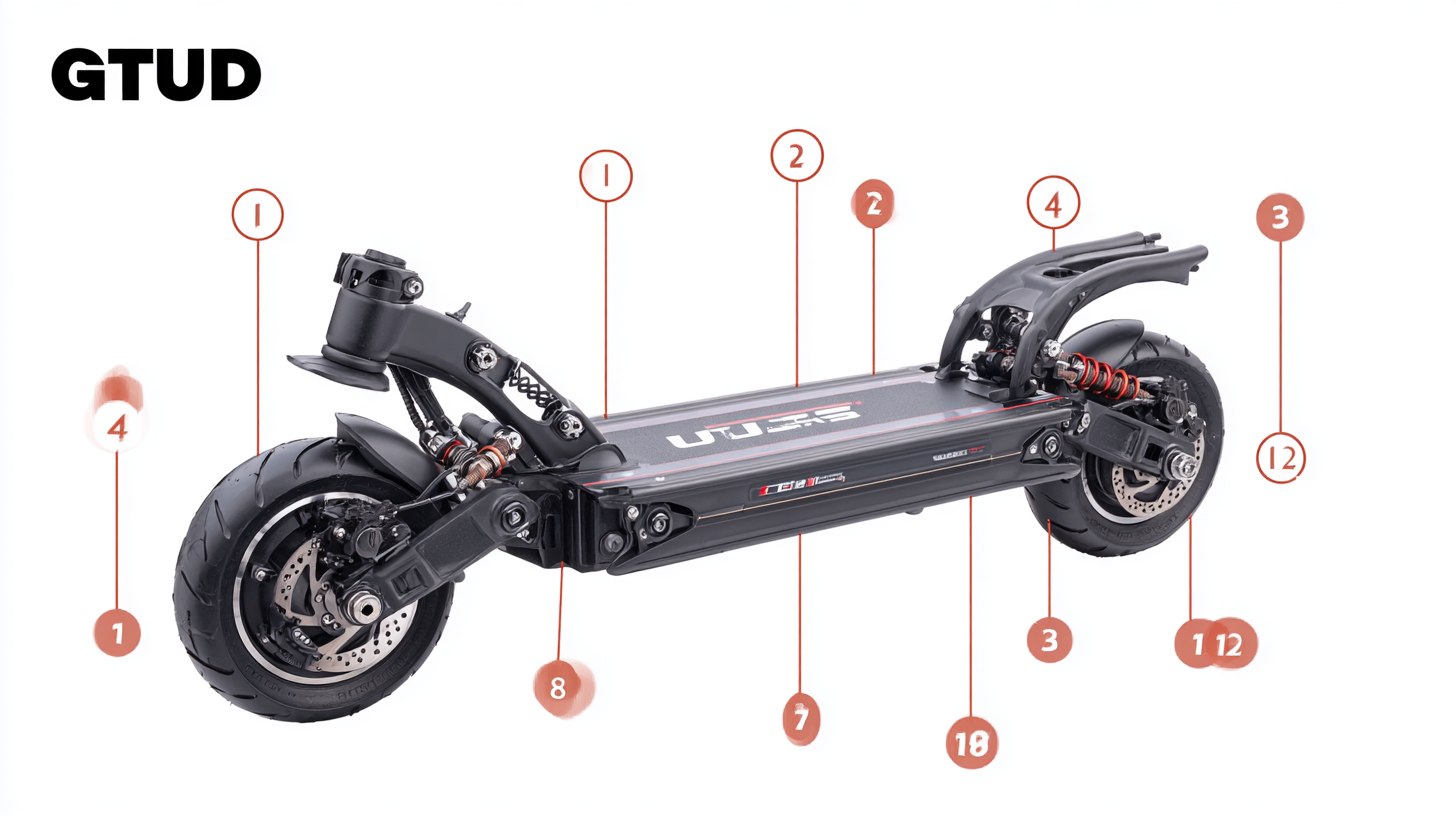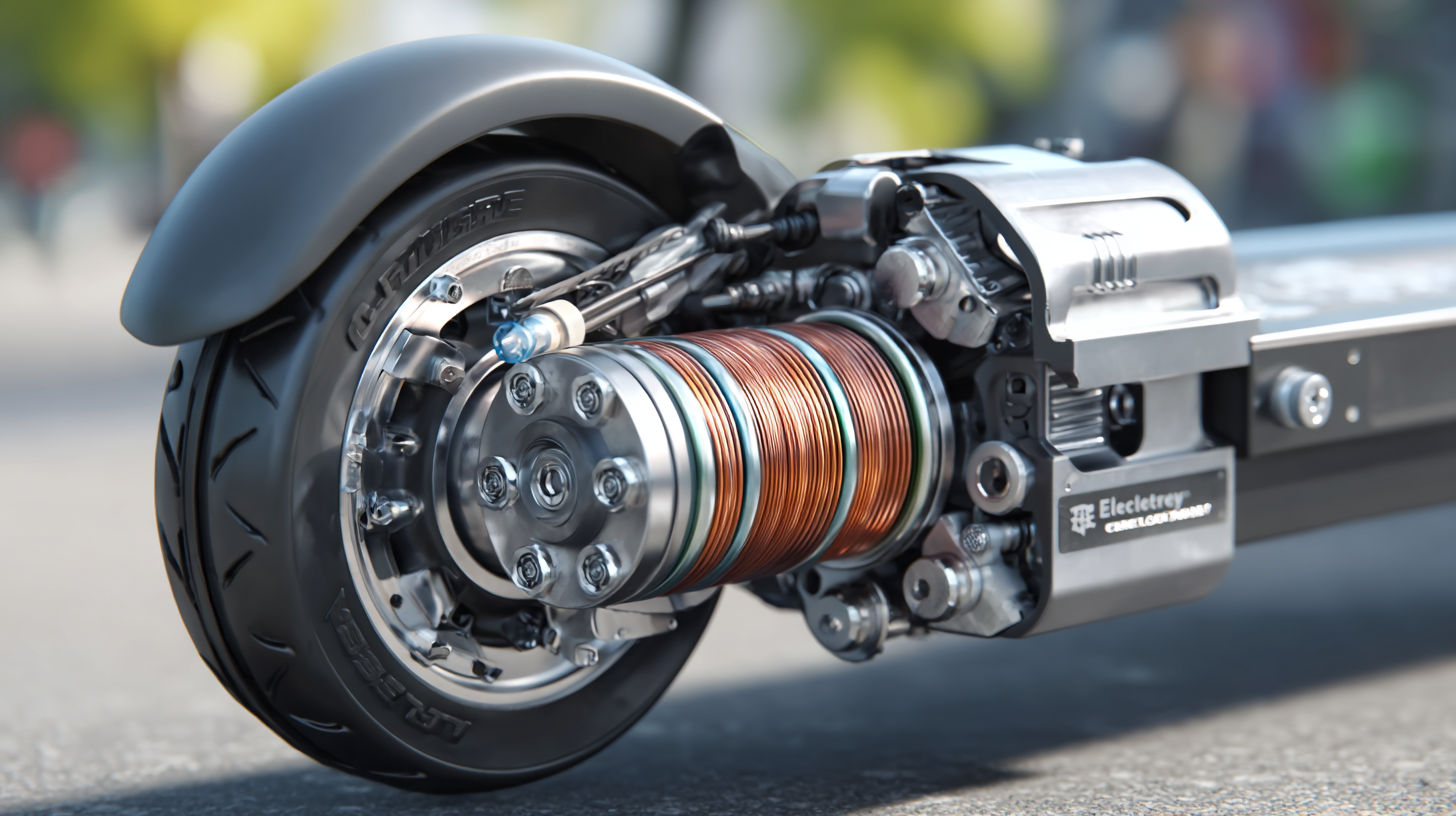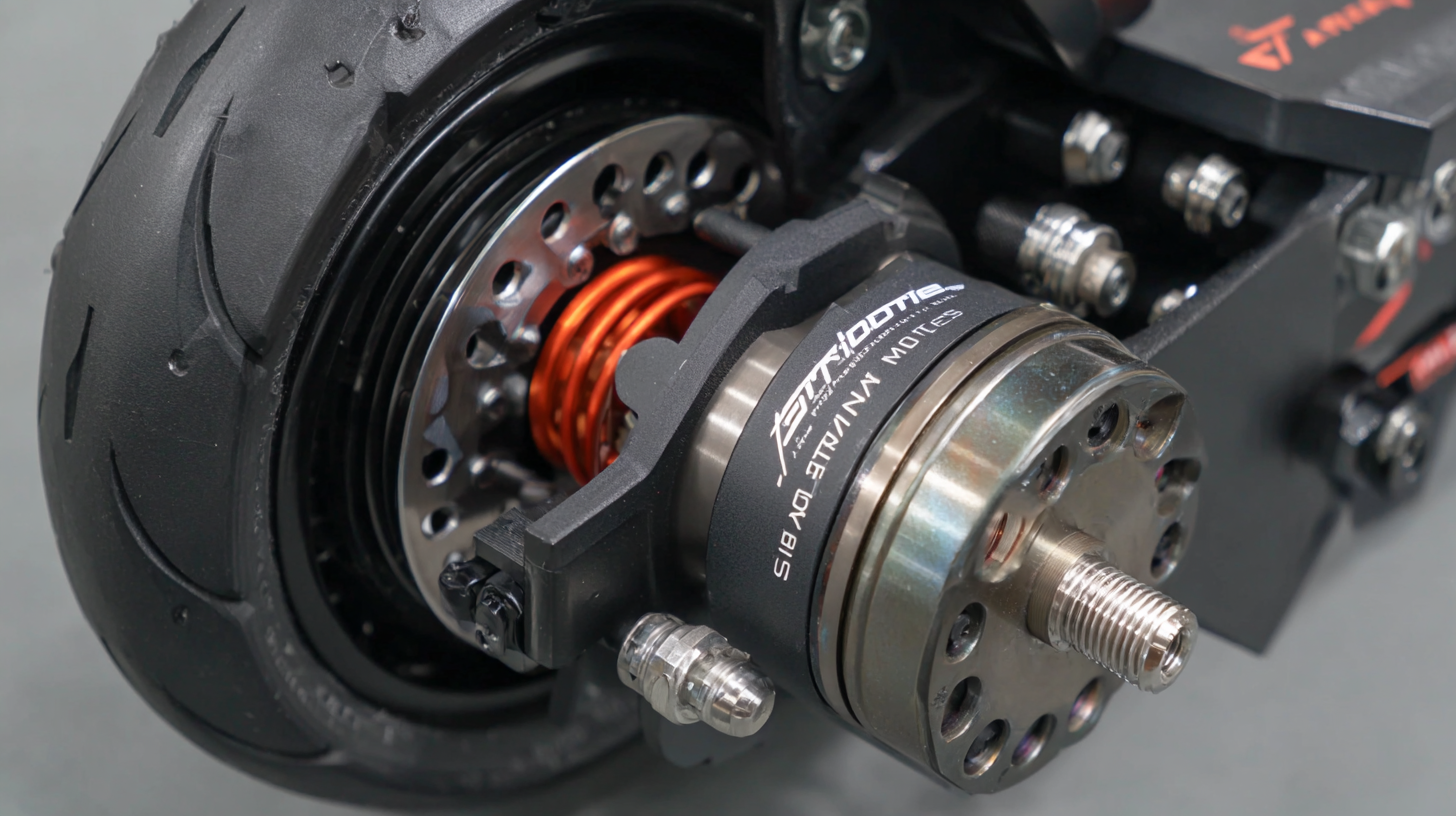 As the electric scooter market surges, driven by a growing demand for sustainable urban transportation, the choice of Electric Scooter Motors becomes crucial for optimizing performance and ensuring longevity. Recent industry reports highlight a projected compound annual growth rate (CAGR) of 7.5% from 2021 to 2026 for electric scooter sales worldwide, underscoring the importance of advanced motor technology in this burgeoning sector. With leading manufacturers from China at the forefront of motor innovation and global exports, understanding the specifications and performance metrics of these motors is essential. Choosing the right Electric Scooter Motors not only influences the scooter's speed and efficiency but also plays a vital role in user experience and environmental impact, making this guide a vital resource for both consumers and industry professionals alike.
As the electric scooter market surges, driven by a growing demand for sustainable urban transportation, the choice of Electric Scooter Motors becomes crucial for optimizing performance and ensuring longevity. Recent industry reports highlight a projected compound annual growth rate (CAGR) of 7.5% from 2021 to 2026 for electric scooter sales worldwide, underscoring the importance of advanced motor technology in this burgeoning sector. With leading manufacturers from China at the forefront of motor innovation and global exports, understanding the specifications and performance metrics of these motors is essential. Choosing the right Electric Scooter Motors not only influences the scooter's speed and efficiency but also plays a vital role in user experience and environmental impact, making this guide a vital resource for both consumers and industry professionals alike.
When selecting an electric scooter motor, understanding the key metrics and types of motors is crucial for optimizing performance. The three main types of electric scooter motors are brushed DC motors, brushless DC motors, and hub motors. Brushless DC motors are favored for their efficiency and longevity, boasting an average efficiency rating of 85%-90% compared to 70%-80% for brushed motors, according to a study by the Electric Vehicle Technical Advisory Committee.
Additionally, motor power is a critical specification that directly influences acceleration and top speed. Most electric scooters range from 250W to 2000W, with higher wattage providing better performance. For instance, scooters featuring 500W motors typically reach speeds of 20 mph, while those with 1000W motors can go up to 28 mph. Furthermore, torque ratings, which measure the motor's twisting force, can significantly affect the scooter's ability to handle inclines. Data from the International Journal of Electric and Hybrid Vehicles suggests that motors with 20-30 Nm of torque are well-suited for urban commuting on hilly terrains.
Another essential metric is the voltage rating, usually between 24V and 72V, with higher voltages resulting in improved power delivery and faster acceleration. The balance between all these specifications is vital; choosing the right motor not only enhances your riding experience but also ensures durability and efficiency over time.
When selecting the best electric scooter motors, understanding the relationship between wattage and performance is crucial. The wattage of an electric scooter’s motor directly influences its power output and efficiency, which can significantly affect your riding experience. According to the Electric Ride Review, most electric scooters fall between 250W and 1000W, with 350W being the sweet spot for urban commuting. Scooters within this range offer a balanced combination of speed, acceleration, and battery life.

Higher wattage generally allows for better hill-climbing capability and the ability to carry heavier loads. For instance, a 500W motor can effortlessly tackle inclines while providing a top speed of around 20 mph, making it suitable for both commuters and recreational riders. However, increased power often comes with a trade-off in battery consumption. A study by the International Journal of Sustainable Transportation indicates that optimizing motor wattage to match riding conditions—such as terrain and rider weight—can enhance overall battery efficiency by up to 30%. Therefore, selecting the right wattage is essential for maximizing both power and efficiency in electric scooters.
When selecting an electric scooter motor, it's crucial to find the right balance between torque and speed. Torque is the driving force that propels the scooter forward, allowing it to accelerate quickly and handle inclines with ease. A motor with higher torque is essential for riders who frequently navigate hilly terrain or require swift starts. On the other hand, speed is determined by the motor's RPM (revolutions per minute) and directly influences how fast the scooter can travel on flat surfaces. Striking a harmonious balance between these two specifications can significantly enhance your riding experience.
Optimizing performance involves understanding how these elements interact. For instance, a powerful motor that delivers excellent torque may sacrifice some top speed, while a high-RPM motor might struggle with rapid acceleration. Riders must assess their typical routes and personal preferences to determine the best compromise. Additionally, customizing the scooter’s settings, like adjusting the controller parameters or utilizing different gear ratios, can help achieve that perfect balance. Ultimately, the goal is to enhance both acceleration for quick starts and maintain impressive top speeds, ensuring a smooth and enjoyable ride.
When selecting the best electric scooter motors, one critical factor that cannot be overlooked is battery compatibility. A motor's performance is significantly influenced by the battery it utilizes; mismatched specifications can lead to decreased efficiency and reduced operating range. For instance, a study by the International Journal of Electric and Hybrid Vehicles highlights that optimizing battery discharge rates with the motor’s input requirements can enhance performance by up to 30%. Therefore, ensuring that the voltage, capacity, and discharge rates of both the motor and battery are aligned is paramount.
Furthermore, to maximize the potential of your electric scooter, maintaining battery health through proper charging practices is vital. Just as in robot vacuums where maintaining battery life contributes to overall performance, implementing strategies like avoiding full discharges and employing smart charging techniques can extend battery lifespan significantly. According to industry reports, consistent maintenance and right charging habits can improve battery life by about 20-50%, translating to longer rides and better efficiency. Adopting such measures is essential for users looking to enhance not only performance but also the longevity of their electric scooters.
| Motor Type | Power (W) | Voltage (V) | Max Speed (km/h) | Range (km) | Battery Compatibility (Ah) |
|---|---|---|---|---|---|
| Brushless | 500 | 36 | 25 | 30 | 10 |
| Brushed | 250 | 24 | 20 | 15 | 8 |
| Hub Motor | 300 | 36 | 24 | 20 | 10 |
| Mid-Drive | 750 | 48 | 32 | 40 | 15 |
When upgrading your electric scooter, optimizing motor output is crucial for enhancing performance and ride quality. Start by focusing on the motor’s specifications, such as wattage and RPM, which determine its power and speed capabilities. For instance, motors with higher wattage (typically 500W to 2000W) provide better acceleration and hill-climbing ability, making them ideal for more demanding terrains. Additionally, ensuring your motor is correctly matched with the scooter's battery capacity can significantly impact its efficiency and longevity. A well-engineered system can maximize energy use and extend the range, with many industry reports indicating that optimal motor and battery pairing can improve performance by up to 20%.

Another essential aspect of motor optimization is regular software updates that can enhance functionality and performance. Utilizing diagnostic tools can help you access critical performance metrics such as battery health and motor diagnostics, enabling you to make informed adjustments. Simple tuning adjustments, such as tweaking the throttle response and regenerative braking settings, can lead to an overall boost in ride efficiency. In fact, studies suggest that fine-tuning these parameters can enhance a scooter’s range and responsiveness by approximately 15%. By focusing on these essential tips, you can transform your electric scooter into a more powerful and efficient riding machine.
